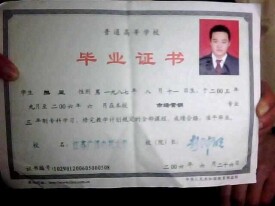共找到2條詞條名為熊亞的結果 展開
- 中國博士生導師,教授
- 《終極惡女》中的人物
熊亞
中國博士生導師,教授
熊亞,教授,博士生導師。近年來主要從事水污染控制理論與技術的教學與科研。
1996年畢業於武漢大學,同年進入中山大學博士后流動站, 1998年留校工作,2000年在瑞典Lund大學進行訪問研究。
⑴ 高級氧化理論與技術;
⑵ 環境超分子技術及其應用;
⑶ 工業廢水深度處理與回用技術;
⑷ 清潔生產理論與技術。
⑴ 《環境污染控制化學》碩士生;
⑵ 《環境治理》本科生;
⑶ 《環境工程導論》本科生。
先後主持國家、省、市和企業的科研項目十多項,參加過多個廢水處理工程的技術開發、設備研製和現場調試,具有一定污染治理的實際工作經驗。
在 Water Res.,Appl. Environ. Microbiol.,J.C.S. Dalton Transactions,Coord. Chem. Rev. 和 Appl. Catal. A 等雜誌上發表論文60多篇,其中SCI收錄的論文40多篇,且被SCI他引近80次. 應Nova Science出版社的邀請參編了‘In New Frontiers in Environmental Research’一書。申請國家專利5項,其中4項已獲批准。
曾被多個著名的國際學術期刊邀請為其論文評審人,它們包括Environ. Sci. Technol.,Industrial & Engin. Chem. Res.,Water Res.,J. Hazardous Materials,Inorg. Chem. Commun.,科學通報和環境科學學報等. 現任廣州市化學化工學會理事和《廣州化工》雜誌的編委,
主持3項國家自然科學基金項目,
2項省自然科學基金項目,
1項教育部留學歸國人員基金項目,
1項市科技攻關項目和1項省環保局科技開發項目,
1項廣東省博士后基金項和多個橫向課題,
其中一項獲得深圳市高新科技項目證書,一項通過了廣東省環保局的鑒定,專家認為該項目的研究成果已達到國際先進水平。
[1]F. L. Fu,R. M. Chen,Y. Xiong*,Comparative investigation of N,N’-bis-(dithiocarboxy)piperazine an1 diethyldithiocarbamate as precipitants for Ni(Ⅱ) in simulated wastewater. J. Hazardous Materials. In press.
[2]F. L. Fu,R. M. Chen,Y. Xiong*,Application of a novel strategy - coordination polymerization precipitation to the treatment of Cu2+-containing wastewaters. Separation and Purification Technology. In press.
[3]F. l. Fu,Y. Xiong**,B.P. Xie and R. M. Chen,Adsorption of Acid Red 73 on copper dithiocarbamate precipitate-type solid wastes,Chemosphere. Accepted.
[4]F. L. Fu,Q. R. Xuan,R. M. Chen,· Y. Xiong*,Removal of Cu2+ and dye from wastewater using the heavy metal precipitant N,N-bis-(dithiocarboxy)piperazine Environ Chem Lett (2006) 4: 41–44
[5]B. P. Xie,Y. Xiong,* et al,Simultaneous photocatalytic reduction of Cr(Ⅵ) and oxidation of phenol over monoclinic BiVO4 under visible light irradiation. Chemosphere 63 (2006) 956–963
[6]C. He,Y. Xiong*,D. Shu,X. H. Zhu,X. Z. Li,Preparation and photoelectrocatalytic activity of Pt(TiO2)–TiO2 hybrid films,Thin Solid Films,503 (2006) 1 – 7.
[7]B. P. Xie,Y. Xiong*,R. M. Chen,J. Chen,P. X. Ca,Catalytic activities of Pd–TiO2 film towards the oxidation of formic acid. Catal.Commun. 6 (2005) 699–704,
[8]C. He,X Z. Li,Y. Xiong,*,X. H. Zhu,S. R. Liu,The enhanced PC and PEC oxidation of formic acid in aqueous solution using a Cu–TiO2/ITO film Chemosphere 58 (2005) 381–389
[9]X.Z. Li,C. He,Nigel Graham and Y. Xiong,Photoelectrocatalytic degradation of bisphenol A in aqueous solution using a Au–TiO2/ITO film J. Appl. Electrochem. (2005) 35:741–750.
[10]C. He,Y. Xiong*,X. Zhu,X. Li,A platinised TiO2 film with both photocatalytic and non-photocatalytic activities towards the oxidation of formic acid. Appl. Catal. A. 2004,275,55.
[11]Y. Xiong* C. He,H. Karlsson,X. Zhu,Performance of a three-phase three-dimensional electrode reactor for the reduction of COD in simulated wastewater-containing phenol. Chemosphere 2003,50⑴ 131-136.
[12]Y. Xiong *,C. He,X. Zhu and H. Karlsson,Removal of formic acid from wastewater using three-phase three-dimensional electrode reactor. Water,Air and Soil Pollution 2003,144 67-79.
[13]Y. Xiong*,C. He,T. C. Cha and X. Zhu,An approach to the structure and spectra of copper barbiturate trihydrate. Transition Met. Chem. 2003,28 69-73.
[14]C. He,Y. Xiong*,J. Chen,C. Zha and X. Zhu,Photoelectrochemical performance of Ag-TiO2/ITO film and photoelectrocatalytic activity towards the oxidation of organic pollutants. J. Photochem. Photobiol,A: Chem. 2003,157⑴ 71-79.
[15]C. He,Y. Xiong* and X. Zhu,Improving photocatalytic activity of Cu-loaded TiO2film using a pulse anodic bias. Catal. Commun.2003,4⑷ 183-187.
[16]C. He,Y. Xiong*,C. Zha,X. Wanng and X. Zhu,Approach to a pulse photoelectrocatalytic process for the degradation of organic pollutants,J. Chem. Technol. Biotechnol. 2003 78⑹ 717-723.
[17]Y. Xiong*,T. An,Q. Yu,C. Cha and X. Zhu,Performance of cod removal from acid scarlet BS-containing solution in a novel packed-bed hollow-tube photocatalytic (php) reactor. J. Evirion. Sci. Health A 2003,38⑸ 935-947.
[18]C. He,Y. Xiong* and X. H. Zhu,Towards understanding the TiO2-mediated photoredox process of Cu(Ⅱ)-formic acid solution. J. Envrion. Sci. & Health. A. 2003,38⑸ 949-963.
[19]Y. J. Lu,J. H. Liu,Y. Xiong,X. H. Zhu,Study of a mathematical model of metal ion complexes in solvent sublation. J Colloid Interf. Sci. 263 ⑴: 261-269,2003
[20]An T. C.,Gu H.,Xiong Y,et al. Decolourization and COD removal from reactive dye-containing wastewater using sonophotocatalytic technology. J Chem. Technol. Biotechnol. 2003,78 ⑾: 1142.
[21]C. He,Y. Xiong* and X. Zhu,A novel method for enhancing photocatalytic efficiency: the combination of Ag deposition with application of external electric field. Thin Solid Films,2002,422(1-2) 235-238.
[22]T. C. An,Y. Xiong*,G. Li,C. Zha,X. H. Zhu,Synergetic effect in degradation of formic acid using new photoelectrochemical reactor. J. Photochem. Photobiol,A: Chem. 2002,152 155-165.
[23]T. C. An,X. H. Zhu and Y. Xiong* Feasibility study of photoelectrochemical degradation of methylene blue aqueous solution with three-dimensional electrode-photocatalytic reactor. Chemosphere. 2002,46⑹,897-903.
[24]Y. Xiong*,T. An,C. He,Y. Liu,J. Chen,C. Zha,H. T. Karlsson and X. Chen,Crystal structure and supramolecular assembly of 1:2 piperazine with O- and P-nitrophenol. J Chem Crystallogr. 2002,32 ⑻219-225.
[25]C. He,Y. Xiong*,X. H. Zhu,Strategies for regeneration of metal(0)-fouled TiO2 photoelectrocataltytic film. J. Environ. Sci. Health A,2002,37⑻,1545-1562.
[26]C. He,Y. Xiong*,D. Su and X. H. Zhu,Electrochemical degradation of aniline in water with a three-phase three-dimensional electrode reactor. Bulletin of Electrochem. 2002,18⑿ 535-542.
[27]Y. Xiong*,P. Strunk,H. Xia,X. H. Zhu and H. Karlsson. Treatment of dye wastewater containing acid orange Ⅱ with three-phase three-dimensional electrode reactor. Water Res. 2001,35⒄ 4226-4230.
[28]Y. Xiong*,H. Karlsson,An approach to a two-step process of dye wastewater containing acid red B. J. Environ. Sci. Health 36A,2001,3,543.
[29]Y. Xiong*,M. Tong,T. An and H. T. Karlsson,Aquabis(3,5-methyl-1H-pyrazol-kN2)(malnonato-k2O,O') copper (Ⅱ)dihydrate. Acta Cryst.2001,C57:1385-1387.
[30]Y. H. Liu,Y.-C. Chung and Y. Xiong,Purification and characterization of a dimethoate-degrading enzyme of Aspergillusinger ZHY256 isolated from sewage. Appl. Environ. Microbiol. 2001,67⑻ 3746-3749.
[31]T. An,X. Zhu and Y. Xiong*,Synergic degradation of reactive brilliant red X-3B using three demension electrode-photocatalytic reactor. J. Enviorn. Sci. Health A36⑽,2001,2068-2082.
[32]T. An,G. Li,Y. Xiong* et al.,Photoelectrochemical degradation of methylene blue with nano TiO2 under high potential bias. Mater. Phys. Mech. 2001,4,101-106.
[33]Xiao-Hua Zou,Hong Li,Guang Yang,Hong Deng,Jie Liu,Run-Hua Li,Qian-Ling Zhang,Ya Xiong,and Liang-Nian Ji*,Synthesis,characterization and crystal structure of a fictionalized ruthenium(Ⅱ) polypyridyl complex with fused triazionone as ligand. Inorg. Chem. 2001,40,7091-7095.
[34]Y. Lu,Y. S. Wang,Y. Xiong,X. H. Zhu,The kinetics of thermodynamics of surfactants in solvent sublation. Fresenius J. Anal. Chem. 2001,307⑻,1091-1095.
[35]Y. Xiong and L. Ji et al,Interaction of polypyridyl ruthenium(Ⅱ)complexes containing non-planar ligands with DNA. J. C. S. Dalton Transactions,1999,1:19.
[36]Y. Xiong and L. Ji,Synthesis,DNA-binding and DNA-mediated luminescence quenching of Ru(Ⅱ) polypyridine complexes. Coord. Chem. Rev.,1999,186:711 (3.47).
[37]Y. Xiong and L. Ji et al,Synthesis,structure and DNA-binding studies on-(3-chlorophenyl)imidazo[4,5-f]1,10-phenanthroline-bis(2,2'-bipyridine) ruthenium(Ⅱ) complex. Transition Met. Chem. 1999,24⑶: 263.
[38]X. H. Zou,B. H. Ye,H. Li,J. G. Liu,Y. Xiong,L. N. Ji,Mono- and bi-nuclear ruthenium(Ⅱ) complexes containing a new asymmetric ligand 3-(pyrazin-2-yl)-as-triazino [5,6-f]1,10-phenanthroline: synthesis,characterization and DNA-binding properties. J. C. S. Dalton Transactions 1999 ⑼,1423.
[39]Y. Xiong*,Zou XH,Wu JZ,Yang HY,Ji LN,Synthesis,characterization and proton-dependent electronic spectra of a series of novel ruthenium(Ⅱ) complexes containing an imidazole unit. Synth. React. Inorg. Met.-org. Chem.,1998,28⑼:1455.
曾獲中國高校科學技術獎二等獎和廣東省科學技術二等獎。
